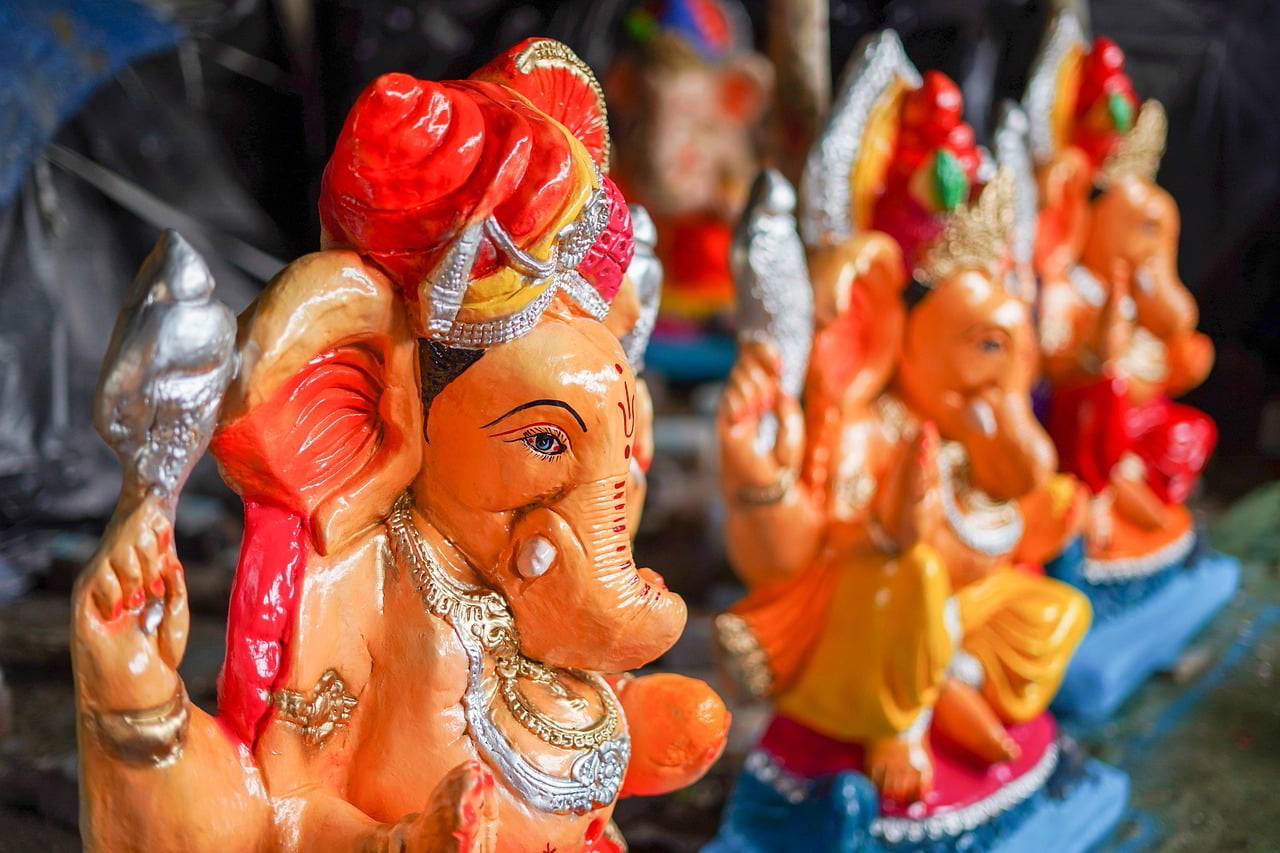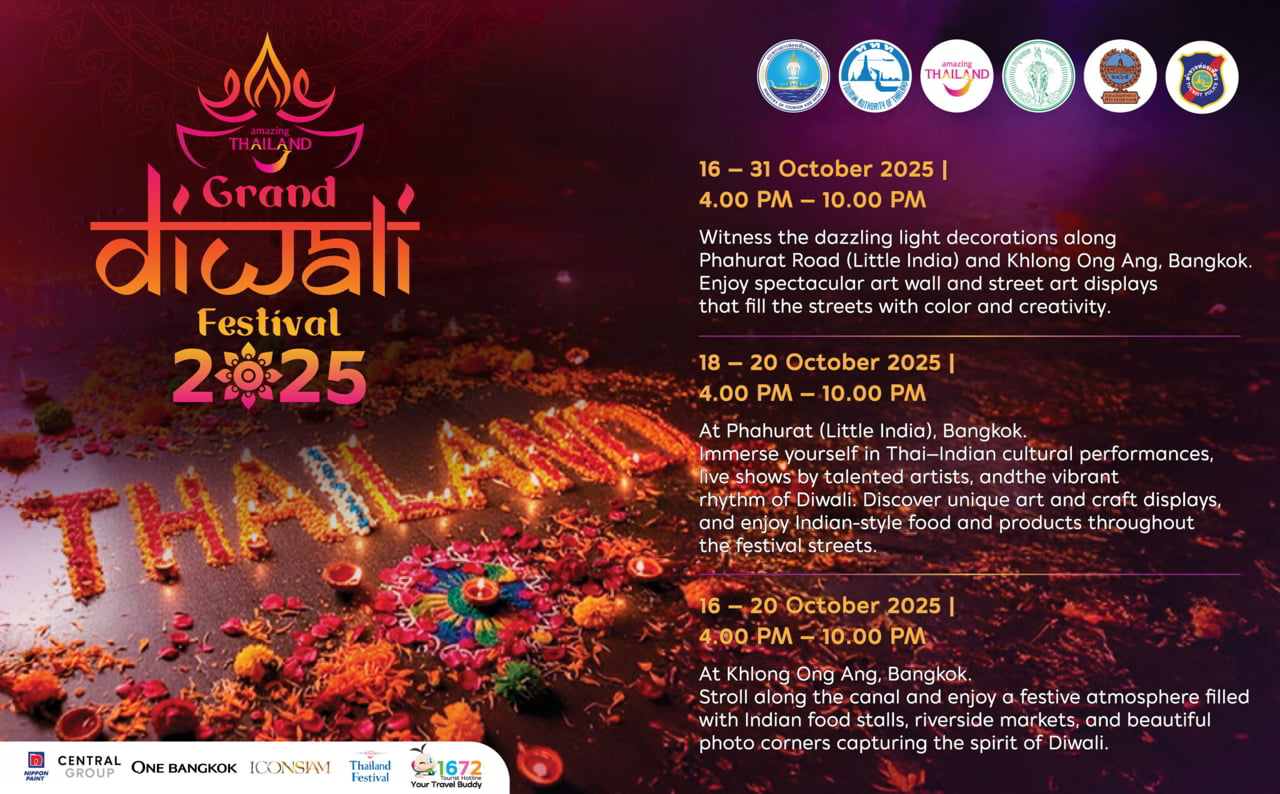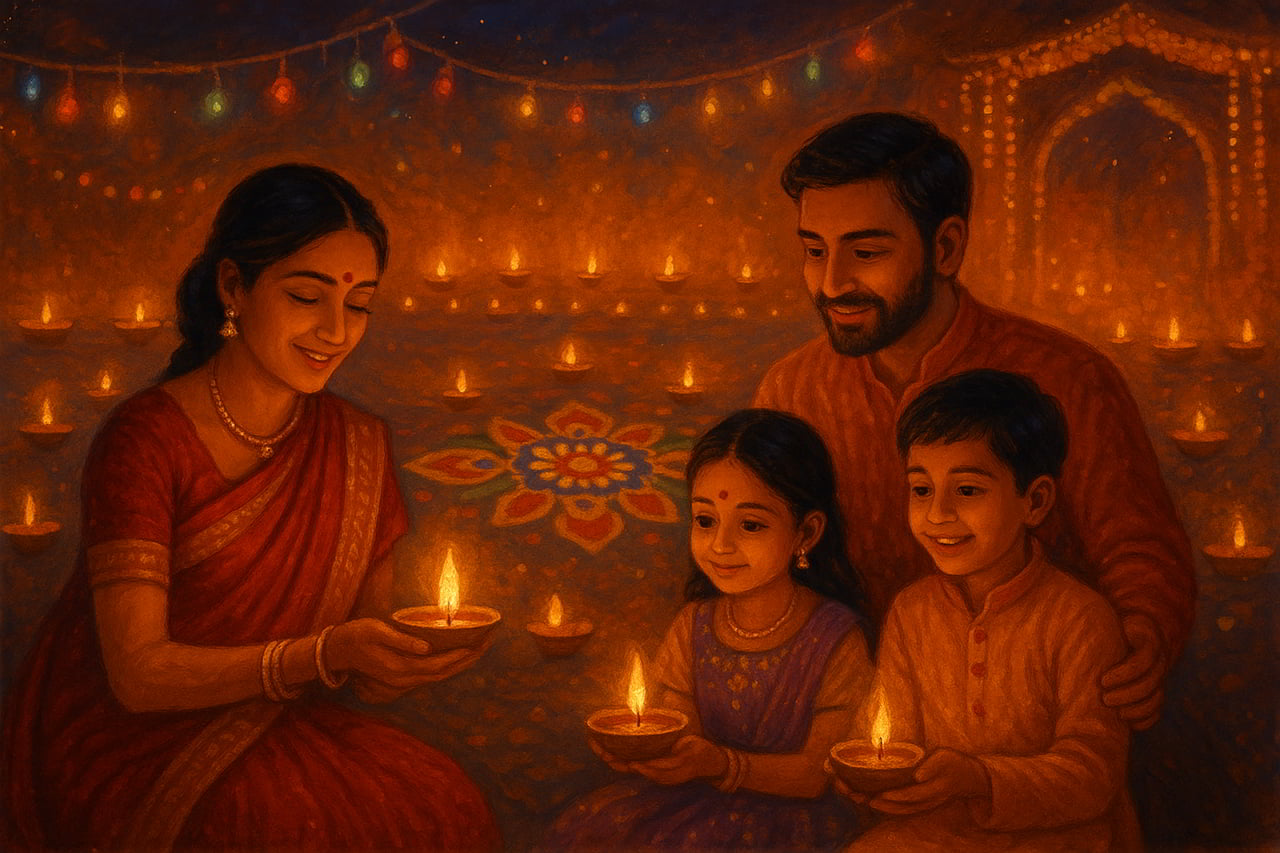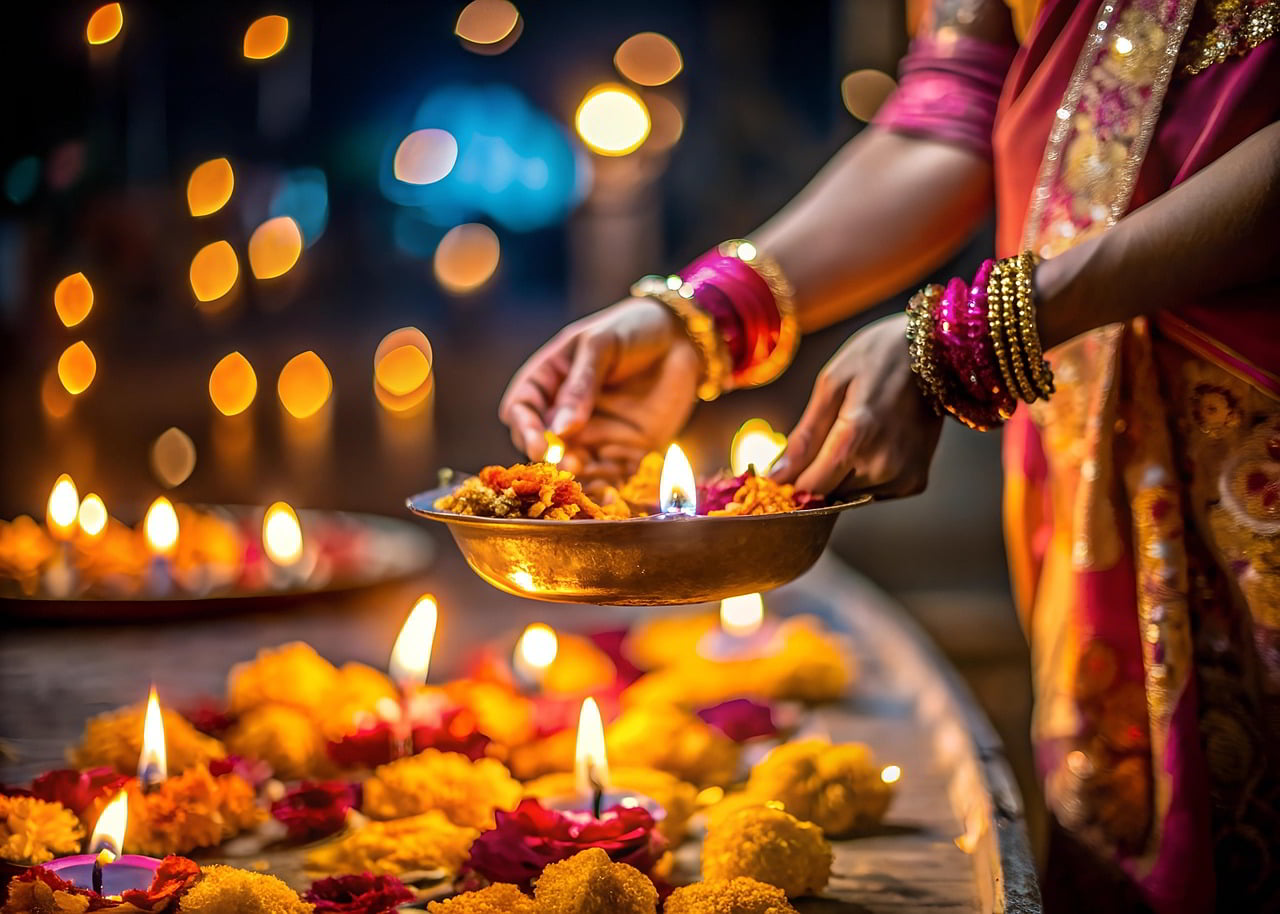
Diwali — Legends, Meaning & Celebrations in Bangkok
Diwali, the Indian festival of lights, universally celebrates the triumph of light over darkness. In Thailand this ancient tradition has a special resonance in Phahurat (Little India) in Bangkok and during the annual Grand Diwali Festival.
Meaning and Legends of Diwali
Word origin and symbolism
The word Diwali (or Deepavali) comes from the Sanskrit dīpa (lamp) and avali (row) — literally a “row of lamps” or “row of light.” That image of aligned lights symbolizes the inner light that drives away darkness. It evokes, as in many cultures, knowledge dispelling ignorance and the victory of good over evil.
Legends in Hindu tradition
Regional retellings offer different origin stories for Diwali, but three texts are central to the festival’s mythic frame:
- Rama and Ayodhya (Northern India): After 14 years of exile and victory over Ravana, Prince Rama returns to Ayodhya. The people illuminated the kingdom to welcome him home.
- Krishna and Narakasura (Southern India): This legend centers on Krishna’s victory over the demon Narakasura, who had imprisoned many women. Their liberation and return were celebrated by families and villages.
- The banishment of Bali (Western India): In this account Vishnu banishes King Bali to the netherworlds to restore cosmic balance and bring light back.
These narratives differ in detail but converge on the same message: the victory of good over evil.
Diwali in Jainism, Sikhism and Buddhism
Diwali is not exclusively a Hindu festival — it has important meanings in other Indian religions.
In Jainism, Diwali marks the day Mahavira, the last great spiritual teacher (Tirthankara), attained nirvana — the soul’s complete liberation — in Pavapuri.
In Sikhism, the festival commemorates the release of Guru Hargobind from Gwalior prison. Known as Bandi Chhor Divas, it symbolizes spiritual freedom and justice.
In some Buddhist traditions — notably in Nepal — Diwali is associated with Emperor Ashoka’s conversion to Buddhism, a key moment for the religion’s spread.
Although Diwali originates in Hindu practice, it is celebrated across communities, giving the festival a universal cultural and spiritual dimension.
How Diwali is celebrated in India
Preparations: cleaning and decorating the home
Before Diwali, Indian families prepare their homes to welcome prosperity. Every room is cleaned, damaged items are repaired and walls are sometimes repainted.
Homes are decorated with clay lamps (diyas), string lights and colorful lanterns. On the floor, people create rangoli — decorative patterns made with colored powders, flowers or rice — to bring luck and invite the goddess Lakshmi in.
The festival’s heart: light, prayer and sharing
The festival’s central moment is the puja to goddess Lakshmi, associated with wealth, often accompanied by the god Ganesha, symbol of wisdom.
At sunset all lights are lit: houses, streets and temples glow with thousands of flames.
Fireworks light the sky, although some cities now restrict them to reduce pollution.
Diwali is also a time for sharing: visiting family, exchanging gifts and offering traditional sweets to relatives and neighbours.
The five festival days and their meanings
Diwali lasts five days, each with its own meaning:
- Dhanteras: buying metal objects (often silver or household utensils) to attract fortune.
- Naraka Chaturdashi / Chhoti Diwali: celebrating the victory of good over evil, symbolized by Naraka’s defeat.
- Lakshmi Puja / Diwali: the main day, dedicated to Lakshmi and light.
- Govardhan Puja / Annakut: commemorating Krishna’s lifting of Mount Govardhan to protect the people.
- Bhai Dooj: honoring the bond between brothers and sisters with affectionate protective rituals.
Whatever the day, light and prayer remain at the core of the celebrations — Diwali is above all a festival of clarity, joy and renewal.
Hindu history and the Indian community in Thailand
Though a minority, the Indian community in Thailand preserves cultural and religious traditions — including Diwali. Hindu temples in Bangkok, such as the BAPS Shri Swaminarayan Hindu Mandir, organise Diwali events.
The Phahurat (Little India) neighbourhood in Phra Nakhon district is the traditional heart of Indian activity in Bangkok.
Hinduism in Thailand
To better understand Hindu influence in Thailand, visitors can explore several sacred Hindu sites across the capital. These short visits reveal the cultural richness of the religion in the country.
Sri Mahamariamman Hindu Temple in Bangkok
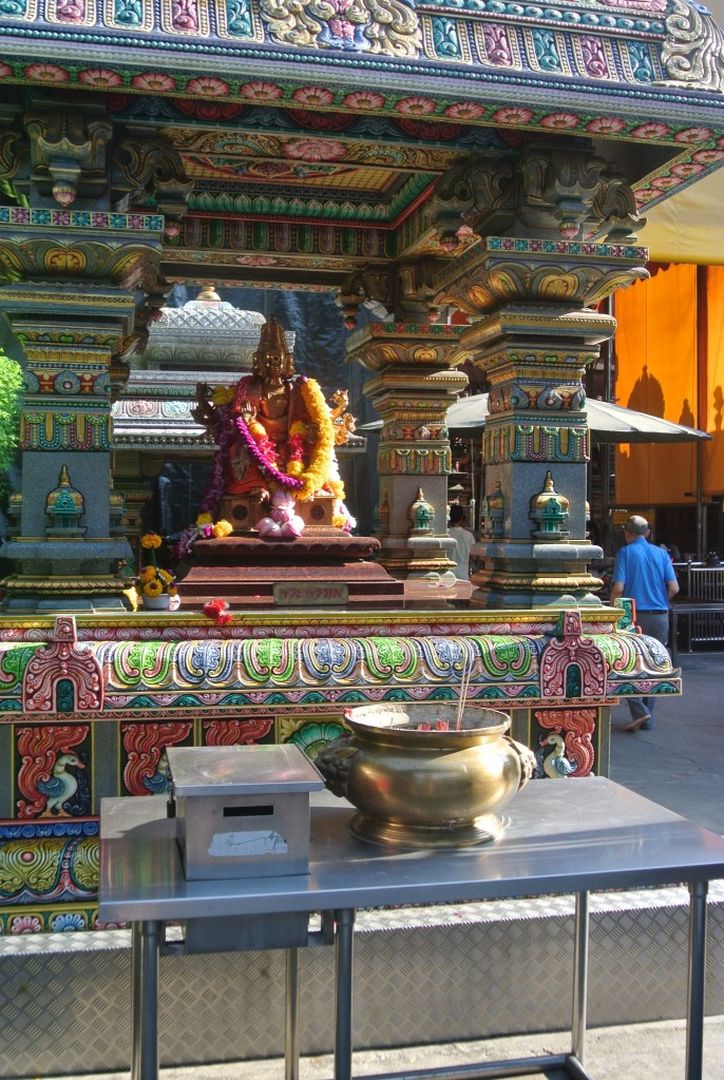
Sri Mahamariamman Hindu Temple in Bangkok
The Sri Maha Mariamman Temple in Bangkok, built by Tamil immigrants in 1860, is one of the city’s few major Hindu temples. Richly decorated in traditional South Indian style, it serves both the Hindu and Buddhist communities. Its unique blend of deities reflects Thailand’s interfaith harmony. Despite its small size, it holds great spiritual importance and attracts many visitors from early morning.
Erawan Shrine - Thao Maha Brahma in Bangkok
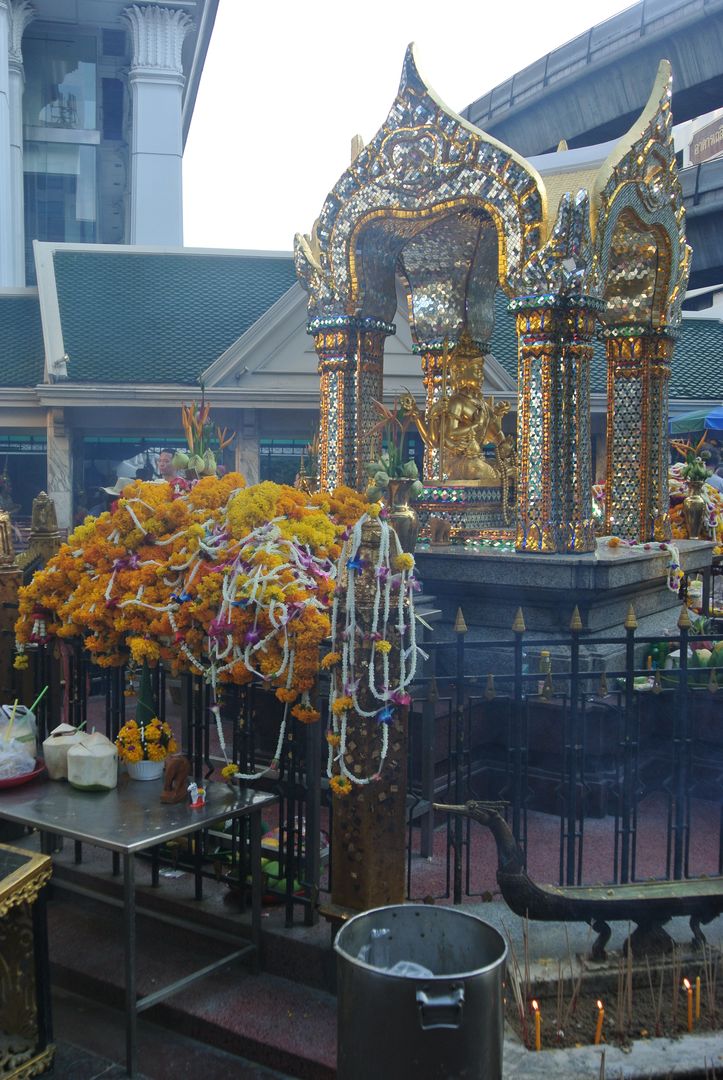
The Thao Maha Brahma – Erawan Shrine was built in 1956 to counter a series of misfortunes during the construction of a hotel in central Bangkok. An astrologer advised erecting a Hindu sanctuary to restore balance, and success followed. Since then, the shrine has become a symbol of luck and prosperity, attracting daily worshippers. Devotees offer flowers, incense, and traditional dances, especially on lottery days
Bangkok’s Indian Quarter: Discovering Hindu Culture
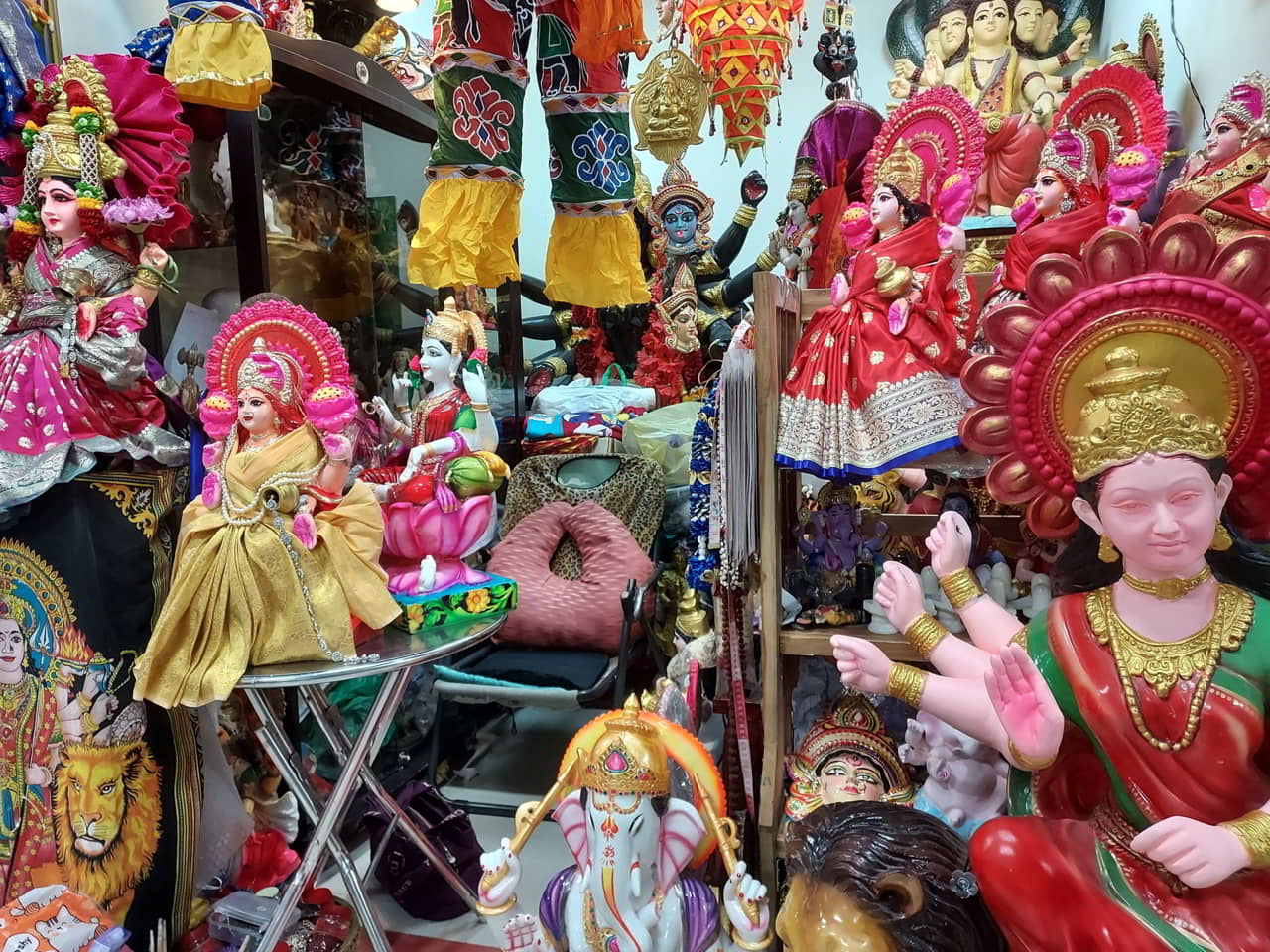
Gurdwara Siri Guru Singh Sabha: Sikh culture in Thailand
Discover Sikh culture in Thailand by visiting Gurdwara Siri Guru Singh Sabha in the Indian quarter of Bangkok. It is a large six-storey building found almost by chance…
Diwali Festival in Bangkok: dates, venues and programme 2025
In 2025 the Amazing Thailand Grand Diwali Festival will run from 16 to 31 October in Phahurat and along the Khlong Ong Ang.
The official opening takes place on 19 October with a candle ceremony, light-and-sound shows and a Ramayana performance (episodes: Triumph of Good, Return to the City, Festival of Light, and a Bollywood sequence).
Highlights include:
- Sacred Light: rituals and illuminations dedicated to Lakshmi & Ganesha
- Art of Light: Thai-Indian light installations
- Blessed Flavour: Indian-Thai cuisine (biryani, dosa, pani puri…)
- Rhythm of Light: classical and contemporary dances (Bharatanatyam, Bollywood, Thai dance)
- Diwali Market: handicrafts and cultural products
- Experiences of Light: henna workshops, lantern decoration, beadwork, fans
- Art Street / Art Wall: Indian and Thai motifs displayed outdoors
Information booths will be set up at Suvarnabhumi and Don Mueang (Oct 16–18), Khlong Ong Ang (Oct 16–20) and Phahurat (Oct 18–20) to guide visitors.
During the festival, the streets come alive with Bollywood shows, clothing and food stalls, and luminous decorations until 22:00.
Over the years the festival has grown: more performances, more cultural partnerships, greater visibility. Year after year it attracts increasing crowds to this colourful event.
It is a significant moment that builds a cultural bridge between Thai and Indian communities and supports cultural tourism.
Practical tips for attending Diwali in Bangkok
- Opening hours: typically 16:00–22:00 (may vary by year)
- Access: MRT (Sam Yot station for Phahurat), then walk to Khlong Ong Ang.
- Dress: traditional Indian attire if you wish.
- Entry: often free, but some activities (workshops, special shows) may require registration.
- Cultural respect: remove shoes in temples, avoid loud behaviour during rituals.
Diwali FAQ — practices & curiosities
| Question | Short answer |
|---|---|
| When does Diwali fall? | On the new moon night (Amavasya) of the Hindu month of Kartika — usually October or November. |
| Do all Hindus celebrate Diwali? | No — some regions or traditions prioritise other festivals; but Diwali is widely observed in many Hindu communities. |
| Can tourists attend the Grand Diwali Festival? | Yes — events are public: shows, markets, workshops — check the official programme and times. |
| Is the festival dangerous because of fireworks? | In India some cities limit or ban firecrackers due to pollution. In Thailand, emphasis is often on light installations rather than loud explosions. |
| Can I join religious rituals even if I’m not Hindu? | Yes — in most temples visitors may observe or respectfully join prayers (remove shoes, dress modestly). |
| What to bring back from a Diwali festival in Bangkok? | Decorative lamps, traditional garments, Thai-Indian handicrafts, sweets and small symbolic gifts. |



